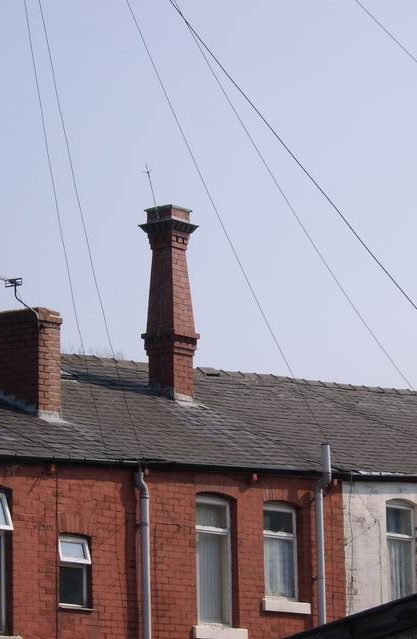|
De Winton
De Winton & Co (1854–1901) were engineers in Caernarfon, Wales. They built, amongst other things, vertical boilered narrow gauge locomotives for use in Welsh slate mines and other industrial settings. At least six De Winton locomotives have been preserved. But these quarry tramway locomotives, for which in the 21st century they are largely remembered, were just a small part of this company's engineering output. Overview The company had its origins in a small foundry built on the slate wharf at Caernarfon by Owen Thomas in the 1840s. He subsequently went into partnership with Jeffreys Parry de Winton and the firm developed as the Union Foundry. Manufactures included street gaslight columns and all manner of street furniture. When the Carnarvonshire Railway was being built under Castle Square, the tunnel roof was supported by iron beams supplied by De Winton's and their name can still be seen at the entrance to the tunnel, which is now used as a road underpass. The foundry wa ... [...More Info...] [...Related Items...] OR: [Wikipedia] [Google] [Baidu] |
Caernarfon Railway Station
Caernarfon Station is the northern terminus of the narrow gauge Welsh Highland Railway, located in the town of Caernarfon. It was opened on 11 October 1997 when the line was constructed from Dinas. History The railway between Caernarfon and Dinas was formerly part of the standard gauge Carnarvonshire Railway, later LNWR and LMS, between Caernarfon and Afon Wen, which was closed by British Railways in December 1964, and the tracks lifted. Northwards of the present Caernarfon station, the former standard gauge line ran through a tunnel, which is now used by a public road, to the site of the original Caernarvon railway station. The LNWR was under an obligation to build a station on this site (below Segontium Terrace), however the town corporation waived its claim to this station. The original line continued on to a junction with the Chester and Holyhead Railway just south of the Britannia Bridge, terminating at the now-demolished Menai Bridge station. Opening The present ... [...More Info...] [...Related Items...] OR: [Wikipedia] [Google] [Baidu] |
Brecon Mountain Railway
The Brecon Mountain Railway (Welsh: ''Rheilffordd Mynydd Brycheiniog'') is a narrow gauge tourist railway on the south side of the Brecon Beacons. It climbs northwards from Pant along the full length of the Pontsticill Reservoir (also called 'Taf Fechan' reservoir by Welsh Water) and continues past the adjoining Pentwyn Reservoir to Torpantau railway station. The railway's starting point at Pant is located north of the town centre of Merthyr Tydfil, Merthyr Tydfil County Borough, South-East Wales. Route description The line runs along part of the trackbed of the northern section of the former Brecon and Merthyr Railway from Pant to a new station at Torpantau, via Pontsticill and Dolygaer, a total of about . This takes the BMR just short of the southern entrance to the 667 yd (610 m) long Torpantau tunnel, the highest railway tunnel in Great Britain, which carried the original line through the hills along the side of Glyn Collwn to Brecon or to Moat Lane or Hereford vi ... [...More Info...] [...Related Items...] OR: [Wikipedia] [Google] [Baidu] |
Llanrwst
Llanrwst ('church or parish of Saint Grwst'; ) is a market town and community on the A470 road and the River Conwy, in Conwy County Borough, Wales, and the historic county of Denbighshire. It developed round the wool trade and became known also for the making of harps and clocks. Today, less than a mile from the edge of Snowdonia, its main pursuit is tourism. Notable buildings include almshouses, two 17th-century chapels, and the Parish Church of St Grwst, which holds a stone coffin of Llywelyn the Great. The 2011 census gave it a population of 3,323. History The site of the original church dedicated to St Grwst was Cae Llan in Llanrwst (land now occupied by the Seion Methodist Chapel). The current church of St Grwst is on land which was donated in about 1170 by Rhun ap Nefydd Hardd, a member of the royal family of the Kingdom of Gwynedd, specifically to build a new church so dedicated. Llanrwst developed around the wool trade, and for a long time the price of wool for the ... [...More Info...] [...Related Items...] OR: [Wikipedia] [Google] [Baidu] |
Vale Of Rheidol Railway
The Vale of Rheidol Railway ( cy, Rheilffordd Cwm Rheidol) is a narrow gauge heritage railway in Ceredigion, Wales, between Aberystwyth and Devil's Bridge; a journey of . It opened in 1902, and from the withdrawal of main line steam on British Rail in 1968 until privatisation in 1989, it was the sole steam-operated line on the 1948 nationalised British Rail network. It was one of the first parts of British Rail to be privatised. Unlike most other preserved railways in the United Kingdom, the Vale of Rheidol Railway did not have a period of closure between its being part of the national rail system and becoming a heritage railway, and so has operated a continuous service for residents and tourists. History Vale of Rheidol Light Railway Company A narrow-gauge railway in the area of Aberystwyth was first proposed after the initial route planned for the Manchester and Milford Railway, from Llanidloes to Aberystwyth via Devil's Bridge, was altered, and then abandoned, before co ... [...More Info...] [...Related Items...] OR: [Wikipedia] [Google] [Baidu] |
Leighton Buzzard Light Railway
The Leighton Buzzard Light Railway (LBLR) is a light railway in Leighton Buzzard in Bedfordshire, England. It operates on narrow-gauge track and is just under long. The line was built after the First World War to serve sand quarries north of the town. In the late 1960s the quarries switched to road transport and the railway was taken over by volunteers, who now run the line as a heritage railway. History Sand extraction A bed of Lower Cretaceous sand across Bedfordshire has been quarried on a small scale for centuries. The most significant occur around Leighton Buzzard. In the 19th century sand was carried by horse carts from quarries south of the town to be shipped on the Dunstable- Leighton Buzzard railway. The carts damaged roads and resulted in claims for compensation against the quarry owners from Bedfordshire County Council. At the end of the century steam wagons were introduced which increased the damage to roads. The outbreak of the First World War cut off supp ... [...More Info...] [...Related Items...] OR: [Wikipedia] [Google] [Baidu] |
Penybryn
Penybryn is a small village situated near Gelligaer Gelligaer ( cy, Gelli-gaer ) is a community in the County Borough of Caerphilly, Wales, in the Rhymney River valley. As well as the village of Gelligaer, the community also includes the small towns of Hengoed and Ystrad Mynach. The population ... in the County Borough of Caerphilly, Wales. Villages in Caerphilly County Borough {{Caerphilly-geo-stub ... [...More Info...] [...Related Items...] OR: [Wikipedia] [Google] [Baidu] |
Pen-yr-Orsedd Quarry Tramways
Pen-yr-Orsedd quarry was a slate quarry in the Nantlle Valley in North Wales. It was one of the last slate quarries operating in North Wales and the last operating in the Nantlle Valley area, finally closing in 1979. History Pen-yr-Orsedd opened in 1816, owned by William Turner who was also the owner of the nearby Dorothea quarry and the Diphwys Casson quarry in Blaenau Ffestiniog. It was acquired on 1854 by John Lloyd Jones who sold it on to the Darbishire Company, owners of the Penmaenmawr granite quarries, in 1862. The new owners invested £20,000 () to expand the quarry, though with limited results; by 1871 the quarry was producing just 500 tons per year. William Darbishire took over direct management of the quarry that year and by 1882 had raised production to almost 8,000 tons. Pen-yr-Orsedd was one of the major slate producers of the Nantlle Valley. It was the last of the Nantlle quarries to commercially produce slate, closing in 1979. Narrow-gauge railway museu ... [...More Info...] [...Related Items...] OR: [Wikipedia] [Google] [Baidu] |
H & J Ellis
Samuel Ellis and Company (also known as H & J Ellis) was a British engineering company, based in Salford, Lancashire. It operated, in various form, from 1832 to 1887. History Samuel Ellis Samuel Ellis was born in 1803 at Melinrhyd, near Cyfronydd railway station, Cyfronydd in Mid Wales. He showed an early interest in mechanical devices, and when he was 11 he built a model of a watermill that included novel improvements to the mechanism. His father, Hugh Ellis, was so impressed that he incorporated Samuel's suggested improvements in his own mill. In 1826, against his parents' wishes, Ellis walked to Manchester to seek work in the engineering industry. He quickly found work, and established himself. Within three years he had been promoted to Shop foreman, foreman. In 1829, married Jane Irlam. They went on to have 6 children. Ellis and Noton In 1832, Ellis branched out on his own, partnering with Michael Noton and forming the company of Ellis and Noton, millwrights and engi ... [...More Info...] [...Related Items...] OR: [Wikipedia] [Google] [Baidu] |
Abercwmeiddaw Quarry
The Abercwmeiddaw quarry was a slate quarry that operated between the 1840s and 1938. It was located at Corris Uchaf about north of Machynlleth, in Gwynedd, north-west Wales. The quarry was connected to the Corris Railway via the Upper Corris Tramway which carried its products to the Cambrian Railways at Machynlleth for distribution. History Quarrying at Abercwmeiddaw probably started in the 1840s. Certainly it was a large enterprise when it was recorded employing 80 workers in 1849. In 1869, a lease was granted for the property and there is an 1871 report by John Imray on the quarry which describes a well-developed concern, although it was not then connected to the Upper Corris Tramway. In 1876, the Abercwmeiddaw Slate Quarry Company was formed, with William Bright as the manager, and acquired the lease to the quarry. By March 1877, all the equipment for the new quarry was installed and a large number of men were being hired to work there. The company quickly established th ... [...More Info...] [...Related Items...] OR: [Wikipedia] [Google] [Baidu] |
Fred Dibnah
Frederick Travis Dibnah, (29 April 1938 – 6 November 2004) was an English steeplejack and television personality, with a keen interest in mechanical engineering, who described himself as a "backstreet mechanic". When Dibnah was born, Britain relied heavily upon coal to fuel its industry. As a child, he was fascinated by the steam engines which powered the many textile mills in Bolton, but he paid particular attention to chimneys and the men who worked on them. He began his working life as a joiner, before becoming a steeplejack. From age 22, he served for two years in the Army Catering Corps of the British Army, undertaking his National Service. Once demobilised, he returned to steeplejacking but met with limited success until he was asked to repair Bolton's parish church. The resulting publicity provided a boost to his business, ensuring he was almost never out of work. In 1978, while making repairs to Bolton Town Hall, Dibnah was filmed by a regional BB ... [...More Info...] [...Related Items...] OR: [Wikipedia] [Google] [Baidu] |







